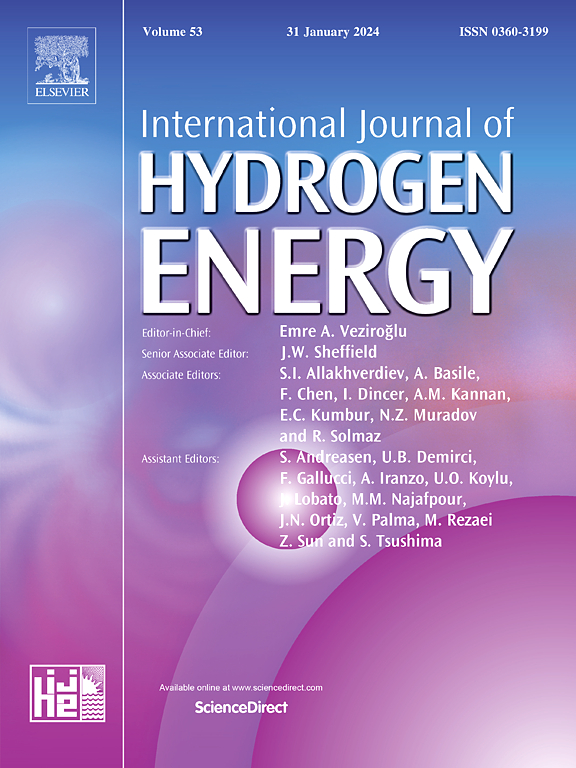水平氢射流撞击弯曲壁面火焰特性:延伸长度和温度分布的实验研究
IF 8.3
2区 工程技术
Q1 CHEMISTRY, PHYSICAL
引用次数: 0
摘要
越来越多地采用氢作为清洁能源载体,凸显了储存和运输安全问题。管道泄漏产生的射流火焰会在冲击相邻结构时演变为撞击火焰,造成重大危害。模拟管道条件,研究了水平氢气射流火焰撞击弯曲壁面的火焰延伸长度和温度分布。火焰延伸长度随泄漏压力和喷嘴直径的增大而增大,但随喷嘴-壁面距离的增大而减小。在椭圆火焰形状假设的基础上,提出了一种新的未燃燃料与热释放率耦合的关系式来预测火焰延伸长度。温度分布在上下方向上有显著差异。撞击区的最高温度遵循经典的三区域模式,氢撞击火焰的峰值温度更高,连续火焰区域更长。以羽流半径为特征长度尺度,碰撞区温度数据均塌陷良好。本文章由计算机程序翻译,如有差异,请以英文原文为准。
Flame characteristics of horizontal hydrogen jet impinging on a curved wall: An experimental study on extension length and temperature profile
The increasing adoption of hydrogen as a clean energy carrier highlights storage and transportation safety concerns. Jet flames from pipeline leaks can evolve into impingement flames upon impacting adjacent structures, posing significant hazards. This study investigates the flame extension length and temperature distribution of a horizontal hydrogen jet flame impinging on a curved wall, simulating pipeline conditions. The flame extension length increases with leak pressure and nozzle diameter but decreases with nozzle-wall distance. A new correlation coupling unburned fuel and heat release rate predicts the flame extension length based on an elliptical flame shape assumption. The temperature distribution exhibits significant difference in upward and downward directions. The maximum temperature in the impingement zone follows the classic three-region mode, with hydrogen impingement flames showing higher peak temperatures and a longer continuous flame region. Using the plume radius as the characteristic length scale, all temperature data in the impinging zone collapse well.
求助全文
通过发布文献求助,成功后即可免费获取论文全文。
去求助
来源期刊

International Journal of Hydrogen Energy
工程技术-环境科学
CiteScore
13.50
自引率
25.00%
发文量
3502
审稿时长
60 days
期刊介绍:
The objective of the International Journal of Hydrogen Energy is to facilitate the exchange of new ideas, technological advancements, and research findings in the field of Hydrogen Energy among scientists and engineers worldwide. This journal showcases original research, both analytical and experimental, covering various aspects of Hydrogen Energy. These include production, storage, transmission, utilization, enabling technologies, environmental impact, economic considerations, and global perspectives on hydrogen and its carriers such as NH3, CH4, alcohols, etc.
The utilization aspect encompasses various methods such as thermochemical (combustion), photochemical, electrochemical (fuel cells), and nuclear conversion of hydrogen, hydrogen isotopes, and hydrogen carriers into thermal, mechanical, and electrical energies. The applications of these energies can be found in transportation (including aerospace), industrial, commercial, and residential sectors.
 求助内容:
求助内容: 应助结果提醒方式:
应助结果提醒方式:


